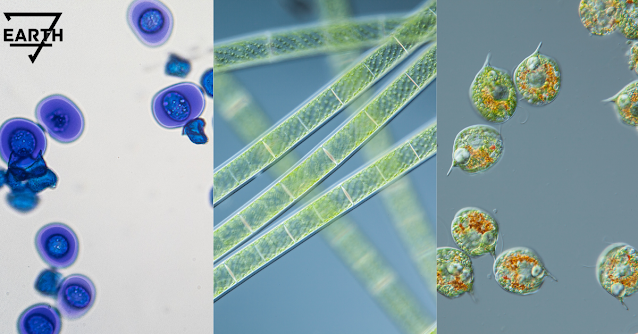Formation Of Life
Billions of years ago, on the young planet Earth, simple organic compounds assembled into more complex coalitions that could grow and reproduce. They were the first life on Earth, and they gave rise to every one of the billions of species that have inhabited our planet since.
So, where on Earth could life begin? To begin searching for the cradle of life, it’s important to first understand the necessities for any life form. Elements and compounds essential to life include hydrogen, methane, nitrogen, carbon dioxide, phosphates, and ammonia. For these ingredients to comingle and react with each other, they need a liquid solvent: water. And to grow and reproduce, all life needs a source of energy.
Life forms are divided into two camps: autotrophs, like plants, that generate their energy, and heterotrophs, like animals, consume other organisms for energy. The first life form wouldn’t have had other organisms to consume, of course, so it must have been an autotroph, generating energy either from the sun or from chemical gradients.
So what locations meet these criteria? Places on land or close to the surface of the ocean have the advantage of access to sunlight. But when life began, the UV radiation on Earth’s surface was likely too harsh for life to survive there. One set offers protection from this radiation and an alternative energy source: the hydrothermal vents that wind across the ocean floor, covered by kilometres of seawater and bathed in complete darkness.
A hydrothermal vent is a fissure in the Earth’s crust where seawater seeps into magma chambers and is ejected back out at high temperatures, along with a rich slurry of minerals simple chemical compounds. Energy is particularly concentrated at the steep chemical gradients of hydrothermal vents.
LUCA wasn’t the first life form, but it’s as far back as we can trace. Even so, we don’t know what LUCA looked like there’s no LUCA fossil, no modern-day LUCA still around instead, scientists identified genes that are commonly found in species across all three domains of life that exist today. Since these genes are shared across species and domains, they must have been inherited from a common ancestor. These shared genes tell us that LUCA lived in a hot, oxygen-free place and harvested energy from a chemical gradient like the ones at hydrothermal vents.
There are two kinds of hydrothermal vents: black smokers and white smokers. Black smokers release acidic, carbon-dioxide-rich water, heated to hundreds of degrees Celsius and packed with sulfur, iron, copper, and other metals essential to life. But scientists now believe that black smokers were too hot for LUCA so now the top candidates for the cradle of life are white smokers.
Among the white smokers, a field of hydrothermal vents on the Mid-Atlantic Ridge called Lost City has become the most favoured candidate for the cradle of life. The seawater expelled here is highly alkaline and lacks carbon dioxide but is rich in methane and offers more hospitable temperatures. Adjacent black smokers may have contributed the carbon dioxide necessary for life to evolve at Lost City, giving it all the components to support the first organisms that radiated into the incredible diversity of life on Earth today.
Visit our home page for more: History Of Earth #historyofearth #longhistoryofearth













0 Comments